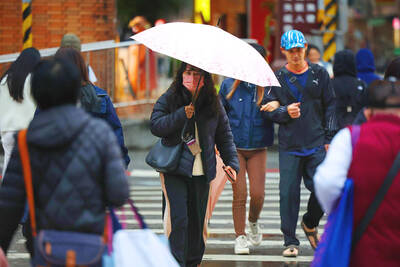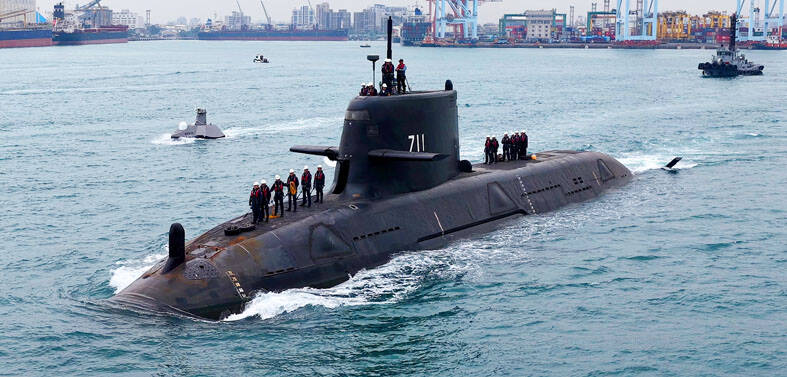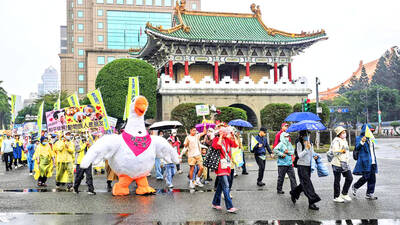The first shipment of cadaver skin from the US to be used for the treatment of hundreds of victims of the Formosa Fun Coast (八仙海岸) water park powder explosion and ensuing fire was scheduled to arrive in Taiwan last night, Food and Drug Administration (FDA) Director-General Chiang Yu-mei (姜郁美) said.
The shipment of 37,000cm2 of cadaver skin, transported by airplane, was slated to arrive late last night, Chiang said, adding that a second shipment of cadaver skin from the US, about 60,000cm2, is scheduled to arrive on July 12.
A shipment of cadaver skin from the Netherlands is also expected to arrive soon, Chiang said.
All of the cadaver and artificial skin is to be stored at a private organ preservation laboratory in Taichung immediately after its arrival, Chiang said, adding that the FDA has set up a transparent information platform for all medical supplies required by hospitals nationwide.
A total of 495 people were injured follwing the explosion of colored cornstarch on Saturday last week at Formosa Fun Coast in New Taipei City’s Bali District (八里). According to the Ministry of Health and Welfare, 211 people remain in critical condition.
A Grateful Taiwan
As of Thursday morning, two people had died of their injuries.
On Thursday, Minister of Health and Welfare Chiang Been-huang (蔣丙煌) said he was grateful for China’s offer to provide medical assistance, including donations of cadaver skin, but added that it should first be confirmed that the skin had not been harvested from executed prisoners.
China has offered human skin grafts worth 20 million yuan (US$3.2 million) to help in the treatment of the burn victims.
Chinese health authorities have also assembled a team of experts specializing in burn treatment that is ready to head to Taiwan at a moment’s notice.
The ministry said that it would first look into whether the skin was harvested from executed convicts.
It added that due to regulations, Chinese doctors are not allowed to treat those injured in last weekend’s blast.
Cadaver skin is the preferred treatment for severe burn patients until a graft of the patient’s own skin can be applied.

NUMBERS IMBALANCE: More than 4 million Taiwanese have visited China this year, while only about half a million Chinese have visited here Beijing has yet to respond to Taiwan’s requests for negotiation over matters related to the recovery of cross-strait tourism, the Tourism Administration said yesterday. Taiwan’s tourism authority issued the statement after Chinese-language daily the China Times reported yesterday that the government’s policy of banning group tours to China does not stop Taiwanese from visiting the country. As of October, more than 4.2 million had traveled to China this year, exceeding last year. Beijing estimated the number of Taiwanese tourists in China could reach 4.5 million this year. By contrast, only 500,000 Chinese tourists are expected in Taiwan, the report said. The report

Temperatures are forecast to drop steadily as a continental cold air mass moves across Taiwan, with some areas also likely to see heavy rainfall, the Central Weather Administration (CWA) said. From today through early tomorrow, a cold air mass would keep temperatures low across central and northern Taiwan, and the eastern half of Taiwan proper, with isolated brief showers forecast along Keelung’s north coast, Taipei and New Taipei City’s mountainous areas and eastern Taiwan, it said. Lows of 11°C to 15°C are forecast in central and northern Taiwan, Yilan County, and the outlying Kinmen and Lienchiang (Matsu) counties, and 14°C to 17°C

STEERING FAILURE: The first boat of its class is experiencing teething issues as it readies for acceptance by the navy, according to a recent story about rudder failure The Hai Kun (海鯤), the nation’s first locally built submarine, allegedly suffered a total failure of stern hydraulic systems during the second round of sea acceptance trials on June 26, and sailors were forced to manually operate the X-rudder to turn the submarine and return to port, news Web site Mirror Daily reported yesterday. The report said that tugboats following the Hai Kun assisted the submarine in avoiding collisions with other ships due to the X-rudder malfunctioning. At the time of the report, the submarine had completed its trials and was scheduled to begin diving and surfacing tests in shallow areas. The X-rudder,

DEMAND: The government should enact regulations in line with Austria and Germany to incorporate vegan nutrition into school meals, an advocate said More than 1,000 people yesterday marched in Taipei to promote veganism, calling for legislation to incorporate vegan diets into school lunches and the national net zero emissions program. Participants gathered on Ketagalan Boulevard in front of the Presidential Office Building for the march, which was organized by the Vegan Action Network (VAN). Former ambassador to Chad Chiu Chung-jen (邱仲仁), actor Yankee Yang (楊子儀) and actress Cindy Lien (連俞涵) attended the event. VAN member Marianne Chao (趙梅君) said that the campaign aimed to urge the government to promote vegan diets across schools and government agencies via legislation and national policies, which would help build